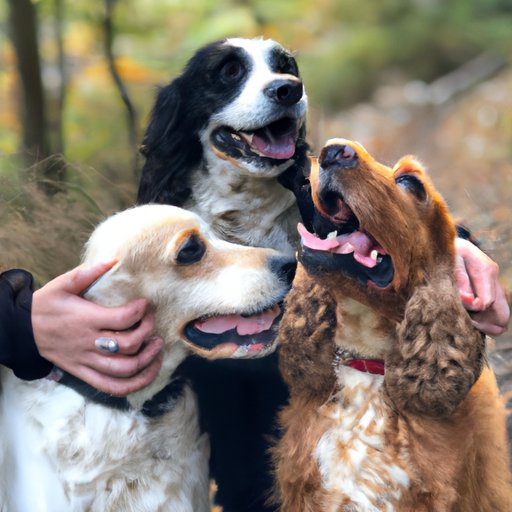
Bonding Basics:
When it comes to bonding with your dog, it’s all about spending quality time together on a regular basis. Dogs thrive on attention and affection, so make sure you are making time to play, cuddle, and engage with your dog every day. Interestingly, when you spend time with your dog, studies have shown that it raises your oxytocin levels, and the same hormone is released in your dog’s brain as well, which strengthens your positive relationship with your dog.
Building Trust and Affection:
If you’re trying to win over a new dog or strengthen your bond with an existing pooch, here are some practical tips:
- Offer treats (in moderation, of course).
- Speak in a soothing, calm voice.
- Play games together, such as fetch or tug of war.
- Go for walks together.
- Take time for training sessions to give you and your dog a sense of accomplishment.
Remember, trust and affection take time to develop, so don’t get discouraged if your dog isn’t immediately responsive. Consistency is key here, so keep at it, and eventually, your dog will come around.
Avoiding Common Mistakes:
There are some common mistakes that people make when trying to bond with their dogs. Here are a few to avoid:
- Being too forceful or assertive (this can be intimidating to your dog).
- Not giving your dog enough space or time to get comfortable.
- Not recognizing or responding appropriately to your dog’s body language (more on that later).
By being aware of these pitfalls, you can avoid them and create a more positive bonding experience with your furry friend.
Reading Dog Body Language:
Dogs communicate through body language, and by understanding what your dog is saying with his or her body, you can respond in a way that builds trust and affection. Here are some common signals you should be aware of:
- Tail wagging (a fast wag usually indicates excitement, while a slower back-and-forth wag can be a sign of uncertainty or apprehension).
- Ear position (pointed forward can indicate alertness or curiosity, while flattened against the head can indicate fear or submission).
- Eye contact (direct, prolonged eye contact can be seen as a challenge or a threat).
- Body posture (a relaxed, loose posture indicates comfort, while a stiff or tense posture can indicate anxiety or aggression).
Keep in mind that context is also important here. For example, a growl in the context of a play session is different from a growl in the context of a confrontation.
Tailoring Your Approach to Your Dog’s Needs:
Finally, it’s important to recognize that different dogs have different needs, personalities, and histories, and tailoring your approach to your individual dog can help build a stronger and more positive bond. This is especially true for newly adopted rescue dogs or dogs with specific sensitivities or anxieties.
For example, if you have rescued a dog who has suffered abuse or neglect, it may take longer for him or her to trust you, and you may need to work with a professional trainer to help undo some of the negative experiences your dog has had in the past. Similarly, if your dog is sensitive to loud noises or sudden movements, you’ll want to be extra gentle and patient in your interactions.
Conclusion:
Building a strong bond with your dog takes time, effort, and patience. By spending quality time together, using positive reinforcement, and being attuned to your dog’s needs and body language, you can create a loving and trusting relationship that will benefit you both for years to come.




